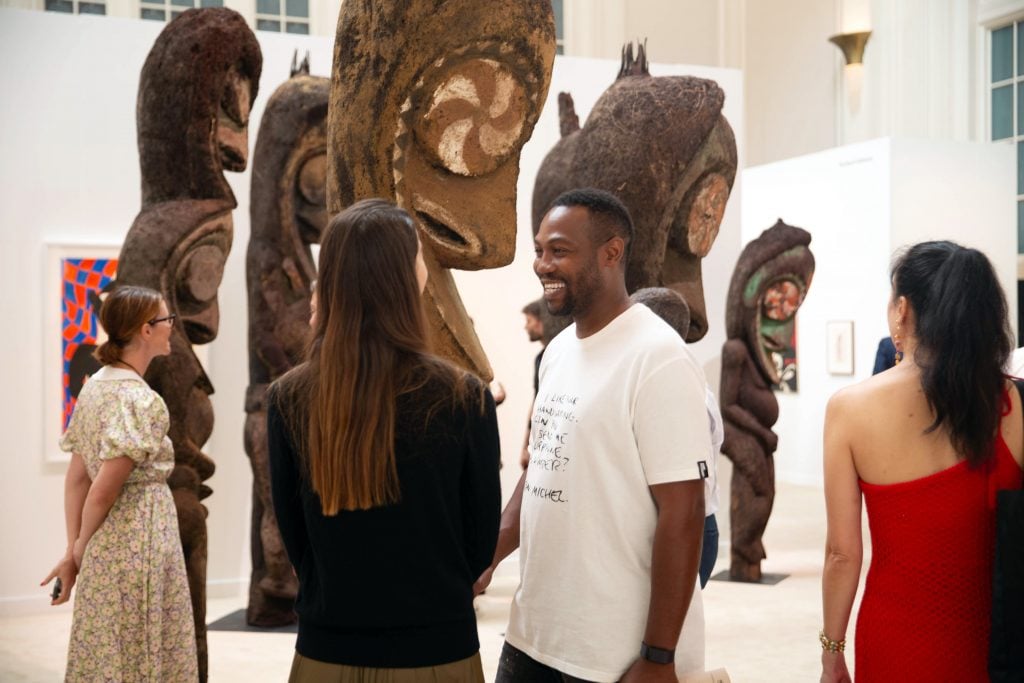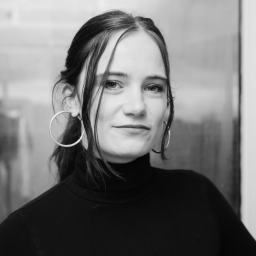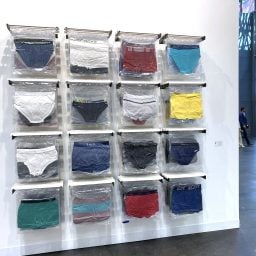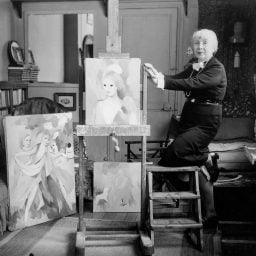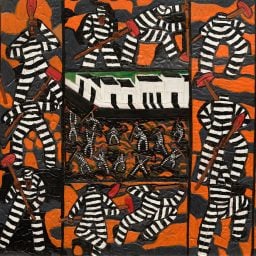On the preview day of Independent 20th Century, the frenzied energy of this week’s packed schedule of openings, parties, and art fairs hadn’t yet permeated the steel beams of the Battery Maritime Building (a.k.a. Casa Cipriani South Street), where dealer James Fuentes was drinking a cold beer early in the afternoon, looking relaxed.
It had been a satisfying start for the New York-based gallerist. “I love showing in this space the most,” he said of the fair’s spacious, stylish location. “The space is beautiful, and even though we have to compete with the Armory Show this year, there’s still been a lot of good people who have shown up today.”
Behind him, a booth brimming with buoyant watercolors by the late Ed Baynard evoked still lifes by Matisse and Cézanne, though the artist is best known as a designer who worked closely with musicians like the Beatles and Jimi Hendrix.
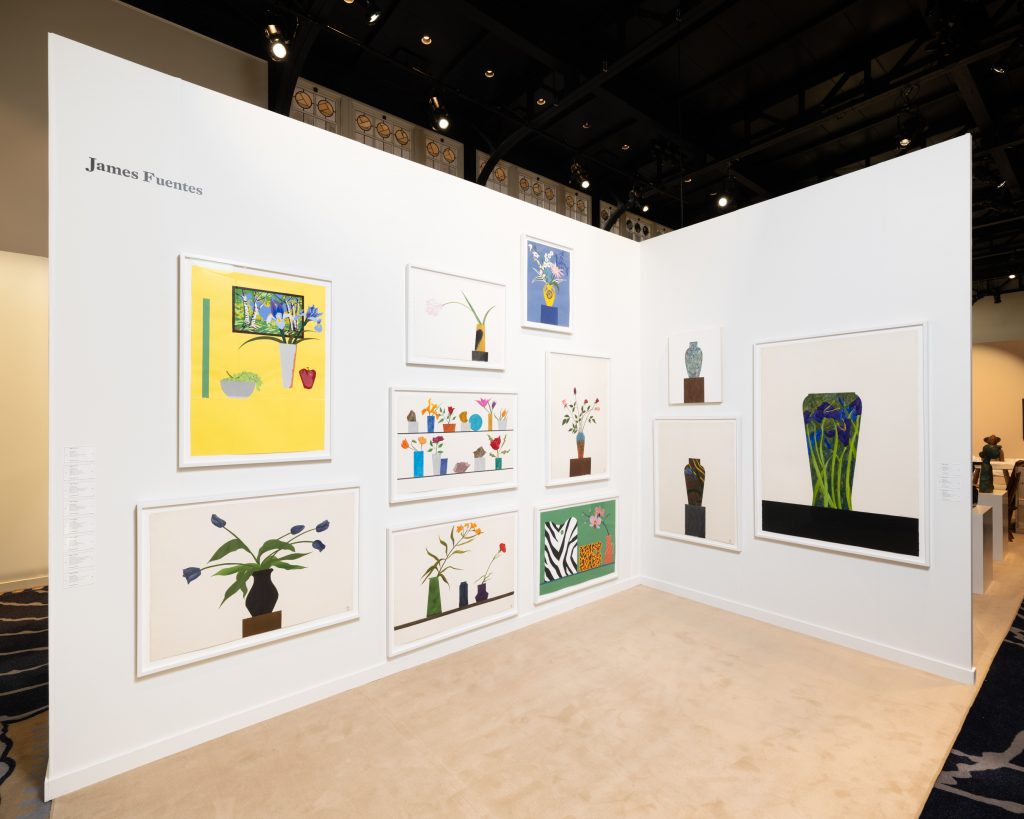
Ed Baynard’s presentation at James Fuentes’s booth at the Independent 20th Century art fair. Photo courtesy of James Fuentes.
The invitation-only fair premiered last year with a stated mission to champion artists and international avant-garde movements from between 1900 and 2000, with an emphasis on highlighting “lesser-known narratives” from that period. The fair is the second in New York City founded by Elizabeth Dee, who launched Independent in 2010 with curator Matthew Higgs. The fall counterpart to the contemporary-inclusive spring show, this year’s edition offers a corrective to historical blind spots, with presentations of approximately 50 artists whose careers map onto various eras of the 20th century.
Some of these figures saw success in their lifetime, others, less so. Key areas of focus this year include women artists; modernists from the Americas, South Asia, and the Caribbean; the Italian avant-garde; and—accounting for around 25 percent of the show this year—self-taught talents.
In the latter category is the American multidisciplinary artist Allan Wexler, whom you can find around the corner from Fuentes at Jane Lombard Gallery’s booth. His work there is perhaps the most conceptual work at this painting-heavy fair.
At the center of the booth sat a table with four cups of coffee on it, each connected to one another by a membrane of tubes. The work, Coffee Seeks Its Own Level, was created by Wexler in 1990, and includes a performance aspect: The work is activated when four people sit down at the table and raise each cup of coffee to fill each other’s cups as well as their own.
“It’s about communication and community and how tables both keep us separate and bring us together, and the choreography of human interaction,” said Wexler, who was on hand to see the performance for the first time since 1990.
Around the piece were other artworks that riffed on how humans relate to one another, drawing from Wexler’s architectural training. One such piece is a reconstruction made in 2021 of the same china coffee cups used in the table piece, which Wexler recast by draping paper over the cup and rebuilding it from small slivers of the paper. “There’s a 30-year difference between these two pieces—but the cup stayed the same,” he noted.
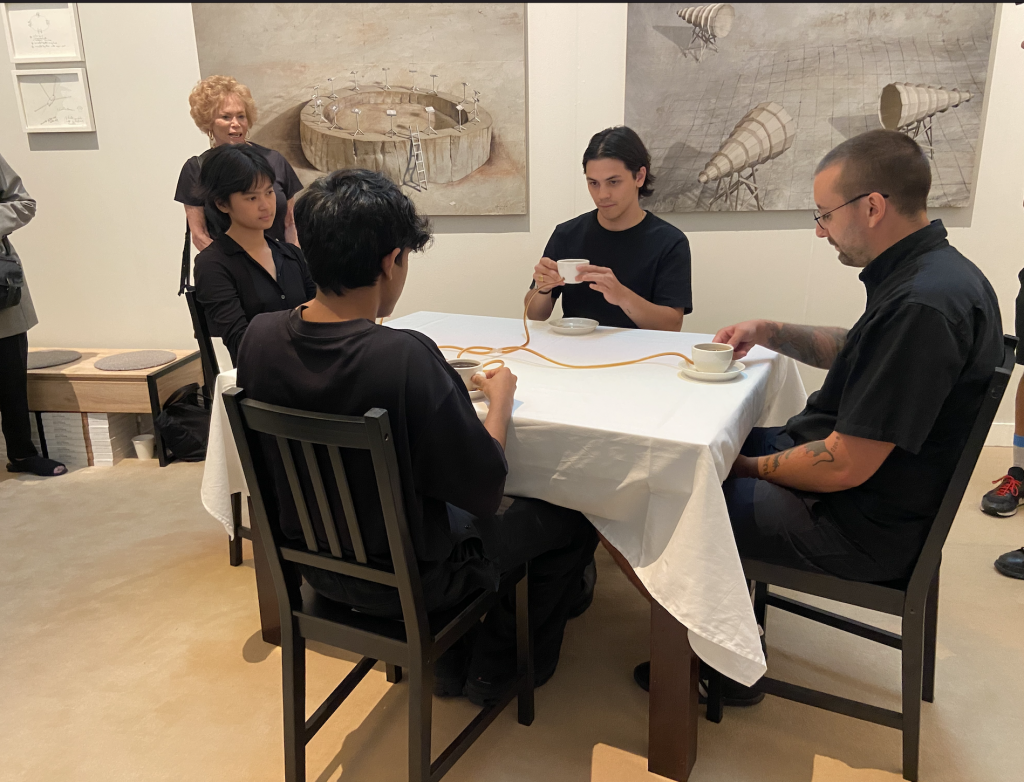
The performance activation of Allan Wexler’s Coffee Seeks Its Own Level (1990) at Jane Lombard Gallery. Photo by Annie Armstrong.
Other standouts from around Independent 20th Century included historical figures from the island of Vanuatu at Venus Over Manhattan’s booth (which had people chattering: “How could they have possibly gotten those over here?!”); a powerful group presentation at Ryan Lee of pastels by three feminist artists—Camille Billops, Vivian Browne, and May Stevens—that appear whimsical at first but reveal their power as you look harder; and surreal paintings and sculpture by the Brazilian-born Miguel dos Santos, making his U.S. debut at Galatea’s booth, which was painted a glowing pale pink.
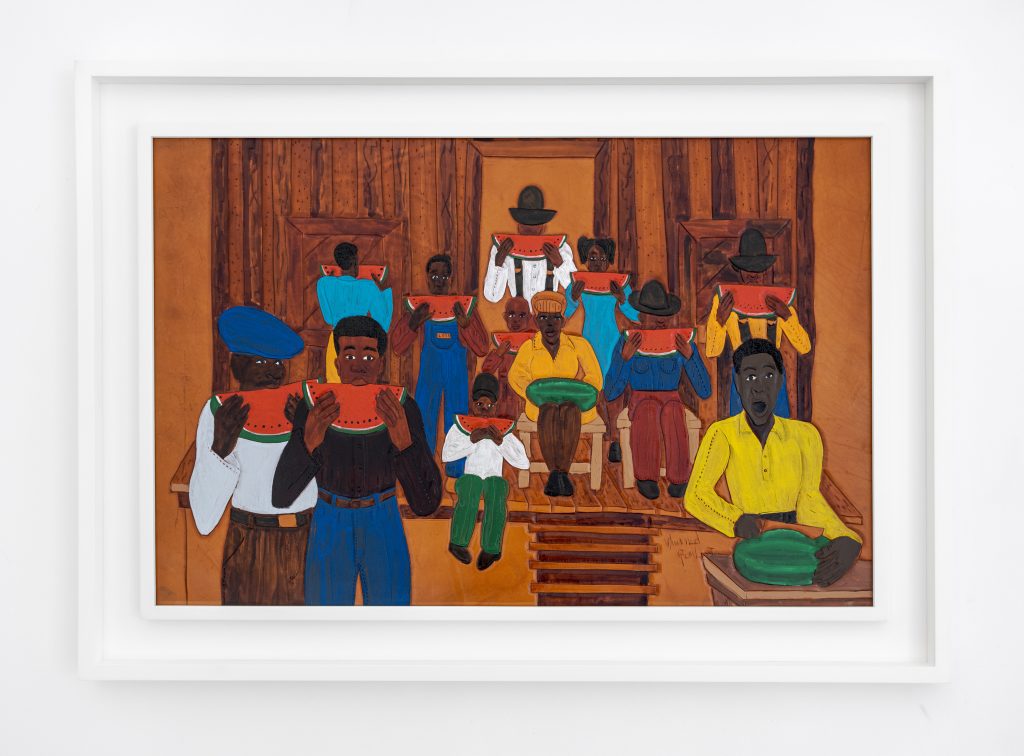
Winfred Rembert, Watermelon, Saturday Evening (2003). Presented by James Barron Art at Independent 20th Century.
Buzz from other gallerists seemed to conclude that the real knock-out booth was James Barron Art’s presentation of leather paintings by self-taught artist Winfred Rembert. Rembert’s skillful mastery of tooling leather came from the five years he spent incarcerated in Cuthbert, Georgia.
After getting out early on good behavior, Rembert married and moved to Connecticut, where his wife encouraged him to record memories of his childhood. The resulting imagery is both jocund and heartbreaking, depicting nights out at jazz clubs or afternoons on the playground, but also touching on the more painful aspects of his past, picking cotton and serving on a chain gang.
“He tools the leather, and then paints these images over them,” Dylan Everett, director of James Barron Art in Kent, Connecticut, told Artnet News. “They’re joyful, and they’re also intense. They’re all incredible.”
Independent 20th Century runs through September 10 at Casa Cipriani, 10 South Street, New York.
